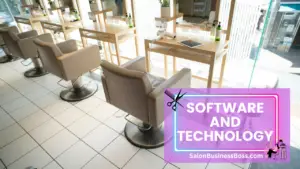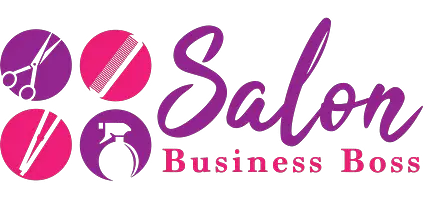Running a successful hair stylist business entails not only creative flair and exceptional skills but also prudent financial management. From salon supplies and equipment to marketing efforts and ongoing education, hair stylists face various expenses that significantly impact their bottom line.
Expenses for hair stylists include salon rent, utilities, supplies, equipment, staff salaries, marketing, education, insurance, software, and taxes. These costs, while essential for success, demand prudent financial management to ensure profitability and top-notch services.
1. Salon Rent and Utilities:
Salon rent and utilities constitute a significant portion of a hair stylist’s expenses. The location and size of the salon play a crucial role in determining these costs. Stylists operating in prime areas with high foot traffic or exclusive neighborhoods often face higher rent prices due to the demand for such locations. Conversely, those in less sought-after areas might find more affordable options.
Utilities, including electricity, water, heating, and air conditioning, are indispensable for creating a pleasant and comfortable environment for both clients and staff. Clients expect a well-maintained salon that offers comfort and convenience during their visits. Additionally, the equipment used by hair stylists, such as hair dryers and styling tools, requires electricity to function efficiently. These utilities are necessary for daily operations and contribute to the overall experience clients have at the salon.
To effectively manage these expenses, salon owners should conduct thorough research to find a location that strikes the right balance between cost and foot traffic. Negotiating the lease terms and considering sharing the space with other beauty professionals could help reduce rent expenditures. Embracing energy-efficient practices and equipment can also lead to savings on utility bills. By conscientiously budgeting for rent and utilities, hair stylists can ensure the salon’s financial stability while providing a welcoming space for clients to enjoy top-notch services.
2. Salon Supplies and Equipment:
Maintaining a well-equipped salon is essential for hair stylists aiming to deliver exceptional services. Salon supplies encompass a wide range of products, including hair care essentials such as shampoos, conditioners, styling gels, and hair dyes. High-quality hair care products not only enhance the results of the stylist’s work but also leave a lasting impression on clients, encouraging loyalty and positive reviews.
Investing in top-notch salon equipment is equally vital. Stylists rely on professional-grade scissors, combs, brushes, and hair dryers to achieve precise and impressive hairstyles. Comfortable and ergonomic chairs ensure clients feel at ease during their appointments, contributing to a pleasant salon experience.
While these supplies and equipment elevate the salon’s standard, they can quickly become expensive, especially when considering the need for regular replacements and upgrades. Hair stylists should prioritize quality and durability when purchasing supplies and equipment to ensure long-term cost-effectiveness.
Building relationships with trusted suppliers and wholesalers can lead to discounted rates and bulk purchase benefits. Staying informed about industry trends and advancements in equipment can help stylists make informed decisions about which items are worth investing in.
3. Staff Salaries and Benefits:

As a hair stylist business grows, employing a team of skilled assistants or additional stylists becomes necessary to handle an increasing volume of clients and ensure the smooth functioning of the salon. Staff salaries and benefits are significant expenses for salon owners, but they are crucial investments in maintaining a talented and motivated team.
Offering competitive salaries that align with industry standards and the experience of the staff is essential to attract and retain skilled professionals. A well-compensated team is more likely to demonstrate dedication and provide excellent services, which ultimately contributes to customer satisfaction and loyalty.
Providing benefits to employees, such as health insurance, retirement plans, and paid time off, demonstrates care for their well-being and enhances job satisfaction. Benefits packages can be tailored to meet the needs of the staff while promoting long-term loyalty and reducing turnover.
To optimize staff-related expenses, salon owners can consider implementing performance-based incentives to reward exceptional performance and boost staff productivity. Regularly evaluating staff performance and providing opportunities for professional development can also lead to a more efficient and satisfied team.
While staff salaries and benefits may represent a substantial part of the salon’s budget, the investment in a well-compensated and motivated team can significantly contribute to the overall success and growth of the hair stylist business.
Read more about: Know Before You Go: Understanding Salon Set Up Cost
4. Marketing and Advertising:
In today’s competitive hair industry, effective marketing and advertising strategies are indispensable for attracting new clients and retaining the loyalty of existing ones. Hair stylists need to allocate a portion of their budget to marketing initiatives to establish a strong brand presence and maintain a steady stream of customers.
Online advertising and social media promotions have become vital components of a successful marketing strategy. These platforms allow hair stylists to reach a broader audience, engage with potential clients, and showcase their expertise through before-and-after images and client testimonials. Targeted online advertisements can be directed towards specific demographics, ensuring a higher return on investment.
Printed materials, such as flyers, business cards, and brochures, help raise local awareness about the salon’s services. Collaborating with local businesses and participating in community events can also enhance brand visibility.
Loyalty programs, referral incentives, and special offers entice existing clients to return and recommend the salon to their friends and family, creating a loyal customer base.
While the expenses for marketing and advertising may vary depending on the salon’s size and goals, these investments are essential for growth and staying competitive in the dynamic hair stylist industry. By strategically allocating funds to various marketing channels, hair stylists can build a strong brand presence, attract new clients, and foster lasting relationships with their valued customers.
5. Ongoing Education and Training:
The hair industry is constantly evolving, with new trends, techniques, and products emerging regularly. To stay competitive and provide clients with the best possible service, hair stylists must invest in ongoing education and training. Continuously updating their skills and knowledge ensures that stylists can offer cutting-edge hairstyles and stay ahead of the competition.
Various avenues for ongoing education exist, including attending seminars, workshops, and industry conferences. These events provide opportunities for stylists to learn from industry experts, experiment with new techniques, and gain insights into emerging trends. Additionally, specialized courses, whether in-person or online, offer in-depth training on specific skills or services.
While ongoing education is essential for professional growth, it does require financial commitment. Salon owners and stylists should budget for these expenses as part of their annual plan. By investing in their development, hair stylists can enhance their expertise and credibility, leading to increased client satisfaction and loyalty.
6. Insurance Coverage:
Insurance coverage is a crucial aspect of any responsible hair stylist business. General liability insurance protects the salon against claims of bodily injury or property damage occurring on the premises. It safeguards against accidents or incidents that could potentially lead to costly lawsuits.
Professional liability insurance, also known as malpractice insurance, provides coverage in case a client claims to have suffered harm or dissatisfaction due to the stylist’s services. This coverage can protect the stylist’s reputation and finances if faced with legal action related to professional errors or omissions.
Property insurance is essential for safeguarding the salon’s physical assets, including the building, equipment, and supplies. In the event of theft, fire, or natural disasters, property insurance ensures that the salon can recover without facing substantial financial losses.
Though insurance premiums may represent ongoing expenses, they provide invaluable peace of mind and financial security. Accidents and unforeseen events can occur, and having the right insurance coverage can protect the salon’s assets and reputation, allowing the business to continue operating smoothly.
7. Software and Technology:

As technology continues to shape various industries, hair stylists are increasingly embracing salon management software and booking systems to optimize their operations. These software solutions offer a range of benefits, from streamlining appointment scheduling to efficiently managing inventory.
Salon management software allows stylists to organize their schedules, allocate time slots for appointments, and automatically send reminders to clients, reducing the risk of no-shows. These tools also help with client record-keeping, tracking preferences, and purchase history, enabling personalized services and targeted marketing efforts.
Inventory management features in the software facilitate tracking product usage and stock levels, ensuring that essential salon supplies are always available. This helps minimize waste and prevent stockouts, allowing the salon to run smoothly without disruptions.
While salon management software offers numerous advantages, it is essential to consider the costs associated with its implementation and maintenance. These expenses may include software licenses, upgrades, training for staff, and technical support. Salon owners should budget for these costs to ensure a seamless integration of technology into their business operations.
Read more about: Commission-Based Salon Ownership: Steps and Practices
8. Cleaning and Maintenance:
Maintaining a clean and well-kept salon environment is vital for both customer satisfaction and the safety of clients and staff. Regular cleaning, organized spaces, and well-maintained equipment contribute to a positive and professional image of the salon.
Cleaning supplies, such as disinfectants, detergents, and disposable items, should be factored into the salon’s budget. These items are essential for maintaining a hygienic environment and complying with health and safety regulations.
Some salon owners choose to outsource janitorial services to professional cleaning companies. While this incurs additional expenses, it ensures that cleaning tasks are carried out efficiently and consistently, freeing up staff to focus on serving clients.
Regular maintenance of salon equipment and fixtures is also essential to ensure their longevity and proper functionality. Budgeting for routine maintenance and occasional repairs helps prevent costly breakdowns and prolongs the lifespan of valuable assets.
Maintaining a clean and well-maintained salon environment not only leaves a positive impression on clients but also creates a comfortable and inviting space for both customers and stylists. By prioritizing cleaning and maintenance expenses, hair stylists can uphold high standards of hygiene and organization, fostering a positive and professional atmosphere that clients will appreciate.
9. Taxes and Licenses:
Complying with tax regulations and obtaining the necessary licenses are essential responsibilities for hair stylists to operate their businesses legally and responsibly. For salon owners with employees, payroll taxes must be calculated and withheld from employees’ wages, and income taxes for the business itself must be paid. Self-employed hair stylists also need to handle their tax obligations, which may include estimated tax payments.
Obtaining the required licenses and permits is crucial to avoid legal issues and ensure the salon’s legitimacy. Business licenses are necessary for operating legally within a specific city or municipality. Other permits, such as health and safety permits, may be needed to comply with local regulations and ensure the safety and well-being of clients.
Failure to meet tax and licensing requirements can result in fines, penalties, and legal complications that can seriously impact the salon’s reputation and financial stability. It is crucial for hair stylists to stay informed about tax laws and licensing regulations specific to their location and seek professional advice if needed.
10. Miscellaneous Expenses:
Running a hair stylist business comes with its share of unexpected expenses that may arise without warning. These miscellaneous expenses can include equipment repairs, sudden increases in utility costs, or unexpected professional development opportunities.
To prepare for such contingencies, hair stylists should allocate a portion of their budget to a contingency fund. This fund acts as a safety net, allowing the salon to navigate financial challenges without compromising daily operations or service quality. Ideally, the contingency fund should cover several months’ worth of essential expenses.
Maintaining a contingency fund requires discipline and consistent contributions. Salon owners should view it as an essential part of financial planning rather than an optional expense. As the business grows and becomes more financially stable, the contingency fund can be adjusted accordingly.
By acknowledging the possibility of unexpected expenses and proactively preparing for them, hair stylists can handle financial challenges with greater confidence and ensure the salon’s resilience in the face of unforeseen events. Having a well-funded contingency plan demonstrates financial prudence and responsible business management, ultimately contributing to the long-term success of the hair stylist venture.
Conclusion
Hair stylists face a myriad of expenses that demand careful budgeting and financial planning. Understanding the detailed breakdown of these expenses empowers stylists to make informed decisions and maintain a sustainable and thriving business. By managing costs effectively and investing wisely, hair stylists can focus on what they do best—creating stunning hairstyles and delivering exceptional service to their valued clients.
Frequently Asked Questions

1. Are there any other miscellaneous expenses I should be prepared for?
Yes, unexpected expenses are common in any business. Create a contingency fund to handle unforeseen costs, repairs, or emergencies.
2. Should I prioritize investing in high-quality salon supplies?
Investing in high-quality supplies enhances the overall salon experience for clients and reduces the need for frequent replacements, saving money in the long run.
3. How can I optimize marketing expenses for better results?
Focus on targeted advertising, social media engagement, and customer referrals to maximize marketing returns while staying within budget.
To learn more on how to start you own salon checkout my startup documents here.
Please note that the contents of this blog are for informational and entertainment purposes only and should not be construed as legal advice. Any action taken based on the information provided in this blog is solely at your own risk. Additionally, all images used in this blog are generated under the CC0 license of Creative Commons, which means they are free to use for any purpose without attribution.

About the author. Entrepreneur and Salon Business Fan.
Hi! I am Shawn and I am a happy individual who happens to be an entrepreneur. I have owned several types of businesses in my life from a coffee shop to an import and export business to an online review business plus a few more and now I create online salon business resources for those interested in starting new ventures. It’s demanding work but I love it. I do it for those passionate about their business and their goals. That’s why when I meet a salon business owner, I see myself. I know how hard the struggle is to retain clients, find good employees and keep the business growing all while trying to stay competitive.
That’s why I created Salon Business Boss: I want to help salon business owners like you build a thriving business that brings you endless joy and supports your ideal lifestyle.

